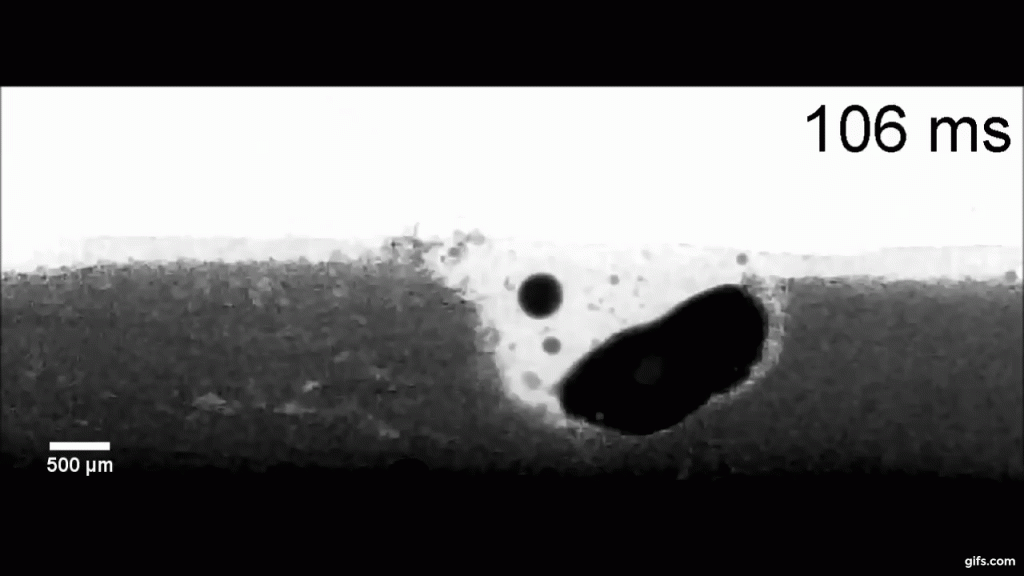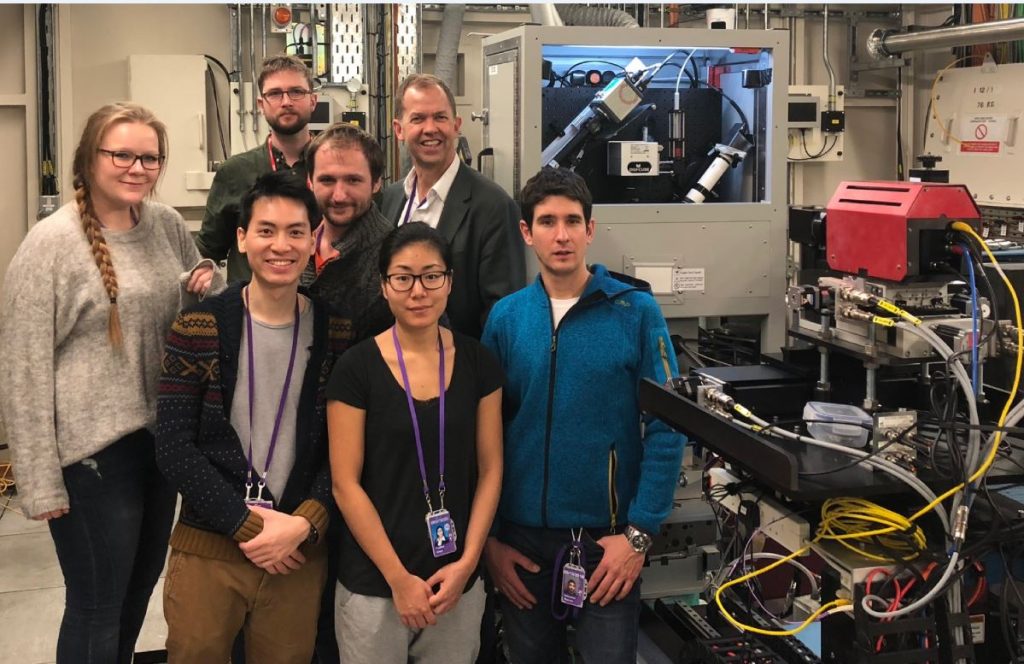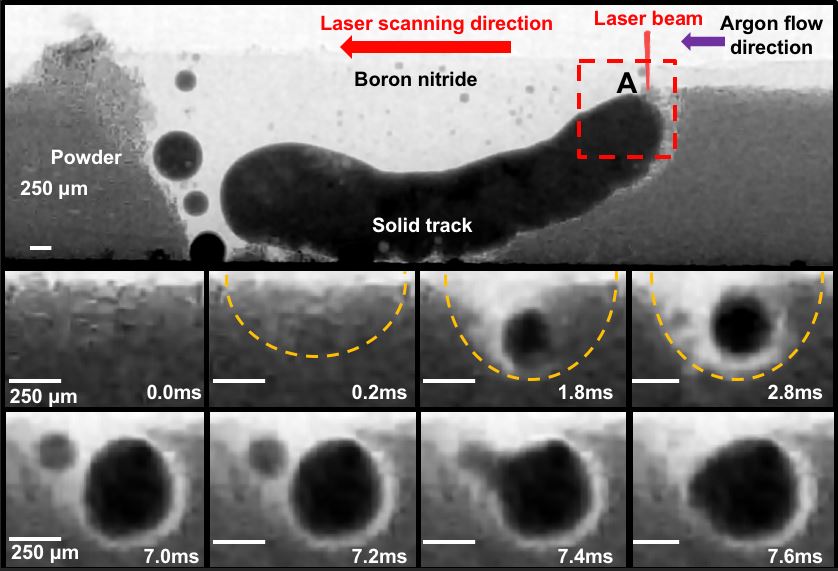Diamond Light Source in Oxfordshire, is the UK’s national synchrotron. A type of particle accelerator, the synchratron is behind some the country’s most cutting edge particle physics research, including the AMAZE collaborative, dubbed “the largest and most ambitious group ever assembled on the topic of Additive Manufacturing.”
The University of Manchester (UoM) is one of the 26 institutions assembled under AMAZE. At Diamond, Professor Peter Lee and his team from the university are leading synchrotron-powered research into laser additive manufacturing (LAM).
In the latest paper published on this research, the team has introduced its findings from the LAM process replicator, known as LAMPR, giving a transparent view of crucial controllable points of the melting process.
The data gathered in this research will be integral to improving the reliability and repeatable of powder-based metal 3D printing processes.

Identifying the point of control
LAMPR is a metal powder bed fusion 3D printer that mimics the abilities of a commercial LAM machine. LAM can describe both powder bed fusion (PBF) systems or directed energy deposition (DED).
The difference with the LAMPR system is that the windows are transparent to x-rays, so when fitted on the beamline all melt activity can be recorded without obstruction.
In the most recent research from this project, the team have studied the point at which the laser meets the powder in a pre-heated bed. In a previous interview, related to Rolls-Royce’s AMAZE research, Professor Lee explains, “The controllable point [of LAM] is just above the surface, where the laser hits the powder,”
“No one actually knows what happens from then on. We are not really sure whether the laser is melting it on the surface or melting the powder in the air.”

Pore-bursting
Using LAMPR, Lee’s Additive Manufacturing Team are studying the formation and evolution of melt tracks, spatter patterns, layer porosity and the powder-free denuded zone in the build chamber.
With the synchrotron, these parameters can be studied with microsecond resolution. Lee adds, “It allows us to follow the process from powder, through melting and then solidification back into the final solid shape.”
Within the first and second layer melt tracks, Lee et al. have discovered that surface porosity is formed via a pore-bursting mechanism, where particles escape into the atmosphere leaving a depression behind.
The team has also observed that the print track is formed when pre-melted material merges with the main melt track.

3D printing predictably
The team’s discoveries have been used to develop a mechanism map that predicts to evolution of melt features. According to the research summary “Our mechanism map provides additional insight into the dynamic changes in melt track behaviour across a range of process parameters,”
In addition, “Future investigations in these areas will deepen our fundamental understanding of the nature of the laser–matter interaction,” particularly in relation to superalloys used to make aeroengines.
You can read more about how NIST is investigating metal additive and also the work at Lawrence Livermore National Laboratory.
“In situ X-ray imaging of defect and molten pool dynamics in laser additive manufacturing” is an open article published in Nature Communications journal. It is co-authored by Chu Lun Alex Leung, Sebastian Marussi, Robert C. Atwood, Michael Towrie, Philip J. Withers and Peter D. Lee.
There is only one week left to vote in the 2018 3D Printing Industry Awards. Vote for research team of the year and more now.
For more of the latest 3D printing news sign up to our daily newsletter, follow us on Twitter, and like us on Facebook,
Search and post 3D Printing Jobs for opportunities and new talent across engineering, marketing, sales and more.
Featured image shows melted metal track as observed in LAMPR. Image via Nature Communications supplementary materials.



